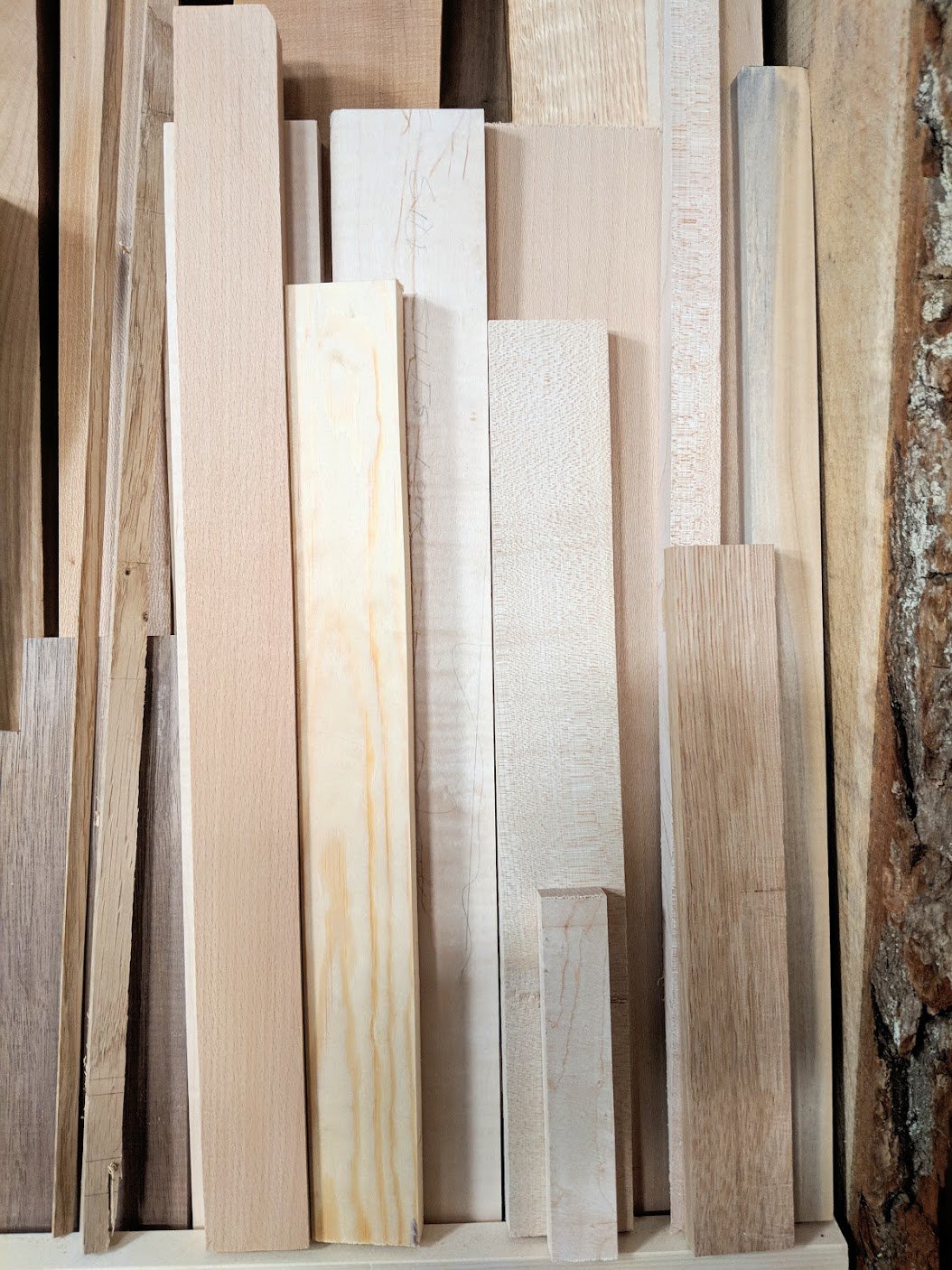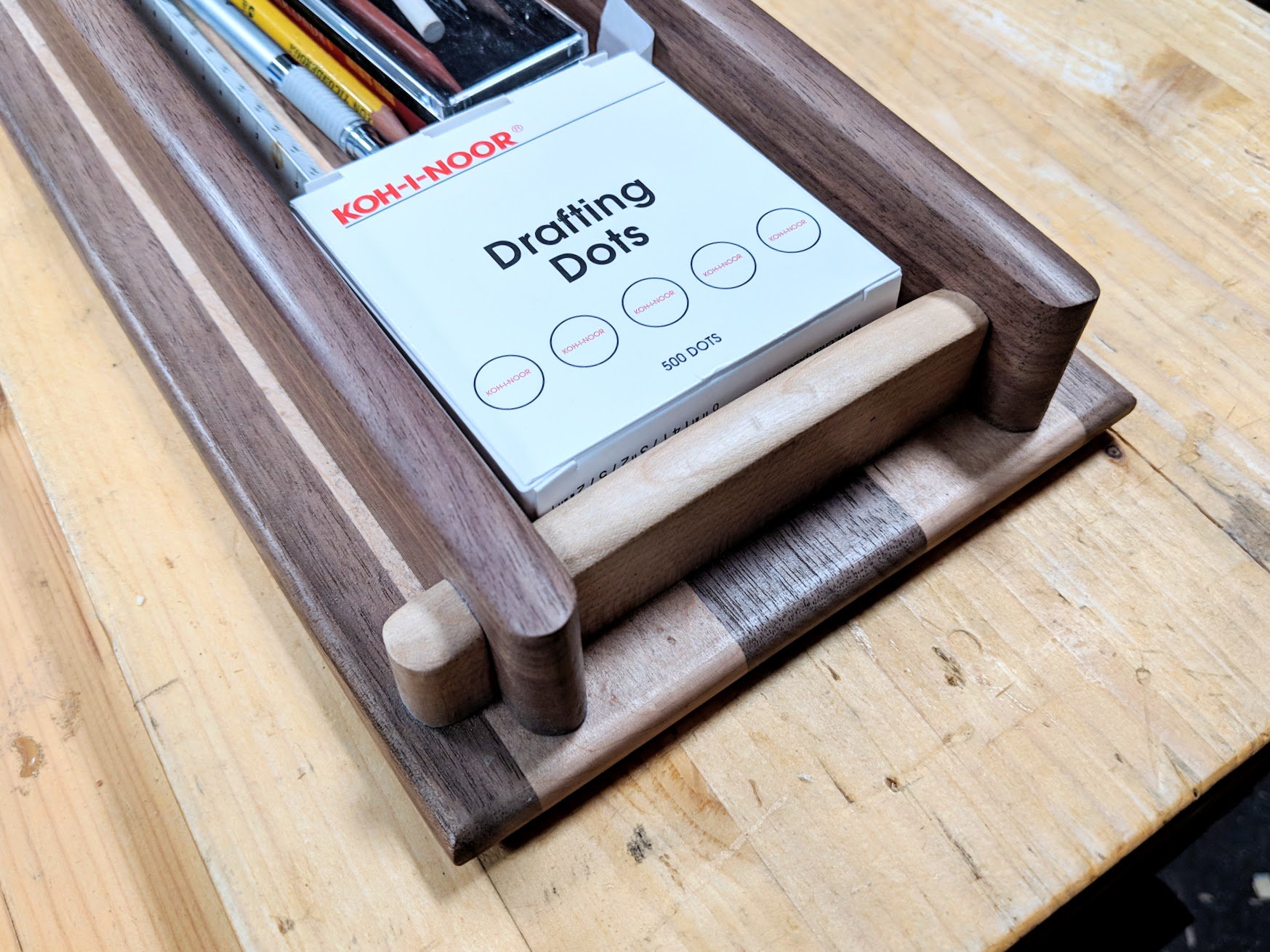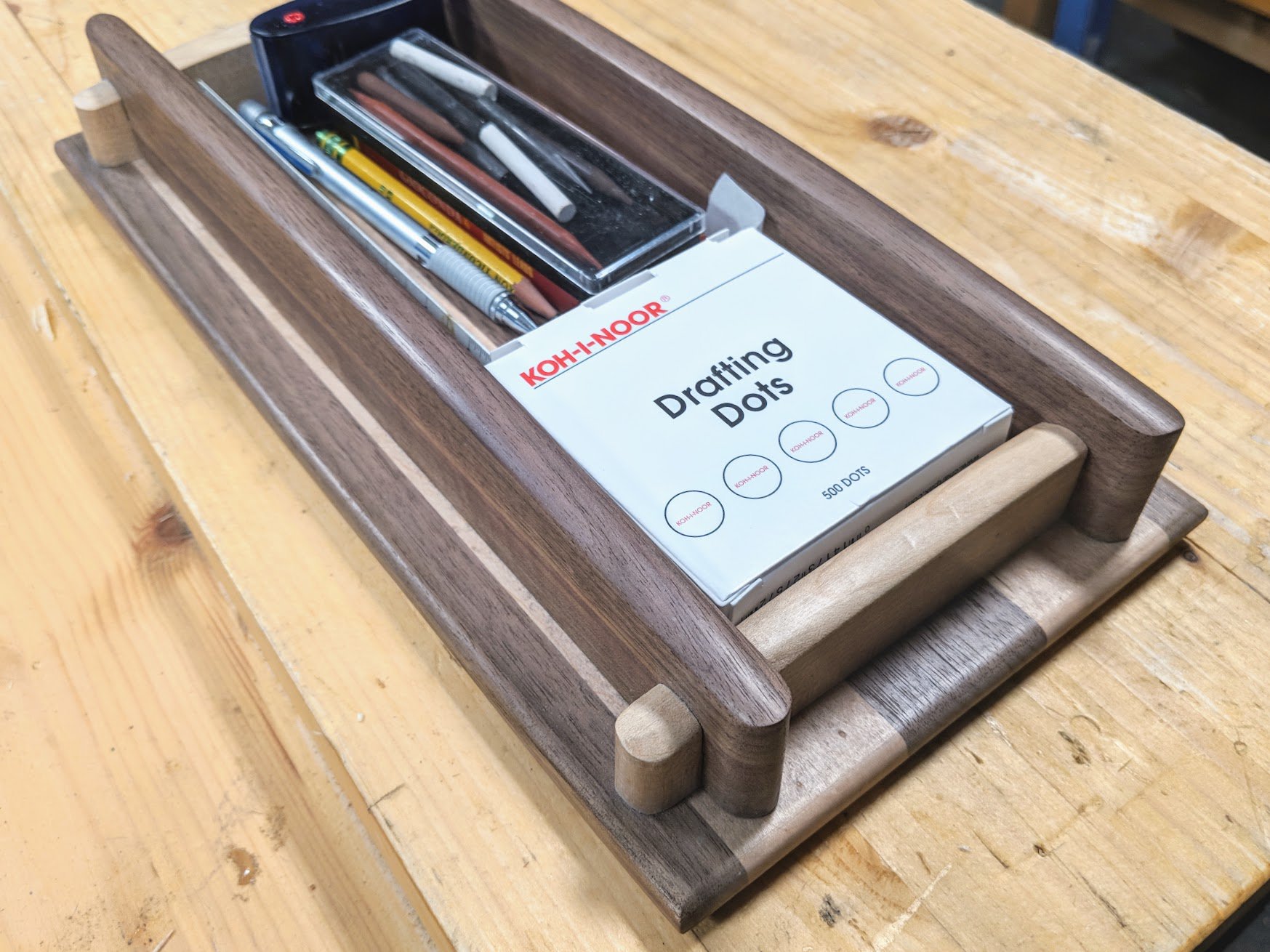From Narrow Scraps…
…useful additions for laminated projects come to be.
I don’t really throw much wood away, it costs too much, even thin strips that seem like throwaway offcuts and often cause clutter can be organised in bins and buckets on end and kept for use in a well-designed small project. This week I took some such strips and developed a masterclasses free project that we just finished the filming of. With eight hand common hand tools, nine strips of thin scraps and one basic yet simple joint type I made this compact tray. You could make it larger and for a different use but this one is useable for cup carrying, my drawing pens and pencils, small tools and pocket emptying for men’s pockets and more. For me it was two hours of solid work to make. Transformed scraps into a pleasing design is reward enough, but as a gift source or a source of income it’s even better. It’s a practical and attractive feature for my desk.
On this project I introduced some techniques for handwork including the half lap joints, the laminating of pieces for a wider sections as panels and so on.
The main thing was to include my thicknessing guide to get exactness in my pieces so I could develop a reliable outcome. I blogged on making one of these a couple of days ago. The jig itself was quite critical, simple to make and it gave me tolerances of thickness down to small fractions of a millimeter. It means all of the planed parts are interchangeable once made and fitted. That the thicknessed pieces for the laminated bottom needed almost no further planing after glue up was a bonus too. It’s well worth the effort.
One thing we have done since woodworkingmasterclasses.com began has been to give tool techniques and method of construction out as free content to free subscribers. Sometimes the easiest way to do that has been through an actual project as is the case with this tray.
The tools I used:
Layout knife, pencil, square, chisel, plane, rasp, file, dovetail saw, chisel hammer.
The wood:
Black walnut, figured maple or sycamore


This comes at a good time. I was just thinking about what to do with my ever growing pile of off cuts and wondering if some of it should be used in the fireplace…
Often it is a both. It’s not that you shouldn’t burn wood for warmth and a comforting evening, just that some of that wood can be moved on into projects with a little effort in lamination to increased widths. If we must laminate for tabletops then why not for the bottoms of trays or panels?
In theory, yes, we can glue small pieces together…but in practice, the time spent on finding pieces of the right/matching dimensions, and on gluing up them, etc. is something I can’t afford, especially not in the winter time when it is too cold.
I wish there were places (like office supplies merchants that take away your electronic throw-away) that accept scrap wood for reuse. We now have household composing program and I put my scraps in the compost bin instead of in the trash can. Which is still not ideal.
I am notorious for hoarding timber, I have a very large planter box I made just for that.
I am still in search of an effective way to keep my off-cuts. I must admit that I throw away (now compose) my scraps all the time, because they take up spaces and when I need small pieces, I tend to cut new ones from a larger board that I can see and use. Small pieces kept in a bucket are pretty much neglected and ignored in my small shop. Bad habit, but if I can find a good way to keep them, I will change.
The odd pieces I throw in a big box for my children to use when they want to make something. With imagination and creativity they make everything out of it.
PVC drain pipe from 4″ to 8″ (when will we ever go to metric in the US???) makes a good way to sort and store small scraps. Also, plastic buckets of all sorts can be used for this purpose. A screw and washer will hold them to a framing member. For the PVC, you can put a bottom in it by cutting some 1 ½” framing lumber with a hole saw. Use the plug as a bottom; a couple of tacks will hold it in. Nothing in my shop is “scrap.” It’s just eligible for repurposing. Remember, even thin “scraps” can be used for edging plywood or MDF.
It takes a higher intellect to work in imperial, I heard. Is that true? Well, those of us who use both metric and imperial,and very few do these days, might use 20ths of inches or even 128ths if you can see that. You tell me! To be honest I like both. I think Europeans only use metric for some strange reason. But it does unify a mass of countries I think.
Hi Paul, I’m Italian but can use both because working for an Italian/American company. And I like both too.
I have been told when I was a child in primary school that Italians use metric because they have 10 fingers. A schoolmate so replied: why English people don’t?
The teacher said: because they have 12 fingers…
I love you and your excellent work both with wood and people, so please forgive me for the joke but it have been one of my funniest moment of when I was a child.
It’s better than saying, “Because they use a foot instead of their fingers.”
I do nearly the same thing except my wife bought a lot of fabric that came on heavy cardboard tubes, so I didn’t have to buy any PVC pipe. I also have used the thin scraps for edging plywood.
this is useful article thank you for sharing